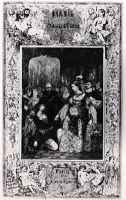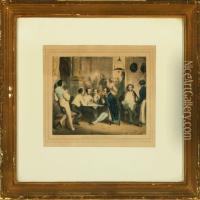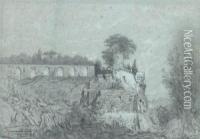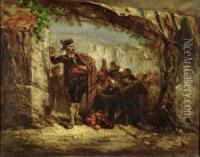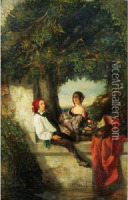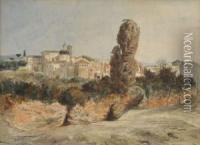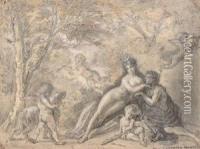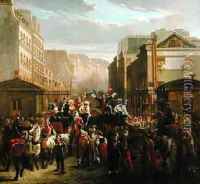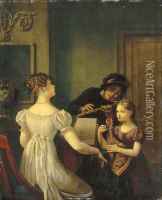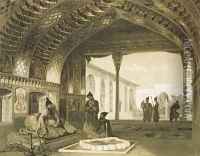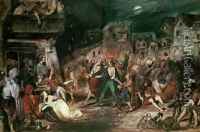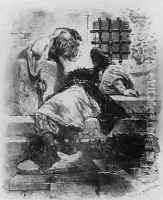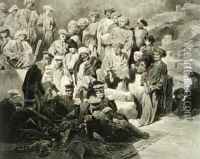Celestin Francois Nanteuil Paintings
Celestin Francois Nanteuil was a French lithographer, painter, and illustrator, born on December 17, 1813, in Rome, Italy, where his father was a member of the French Academy. Although he was born in Italy, Nanteuil is often considered a French artist due to his significant contribution to French art and his active years spent in France.
Nanteuil studied at the École des Beaux-Arts in Paris and was a pupil of the painter Ingres and the lithographer Louis-Simon Lempereur. Early in his career, he became well-known for his lithographic portraits, which were highly acclaimed for their artistic quality and technical finesse. These portraits often depicted contemporary literary, artistic, and political figures, capturing the cultural essence of his time.
During the 1830s, Nanteuil was deeply involved in the Romantic movement in France and became closely associated with the works of leading literary figures such as Victor Hugo and Alexandre Dumas. He illustrated many of their works, thereby contributing to the visual culture of French Romanticism. Nanteuil's illustrations were celebrated for their vivid characterizations and rich detail, which complemented the literary narratives they accompanied.
In addition to his lithographic work, Nanteuil also painted and produced etchings. His paintings often reflected historical and mythological themes, which were popular during the Romantic period. Despite being less known than his lithographs, his paintings demonstrated his versatility and skill in handling different mediums.
Nanteuil's influence extended beyond his own artworks. He became an influential figure in the Parisian art scene and mentored several younger artists who would go on to make their marks in art history. His work was exhibited in the Salon, and he received numerous accolades for his artistic achievements throughout his career.
Celestin Francois Nanteuil passed away on September 16, 1873, in Paris. He left behind a legacy as one of the prominent lithographers of his time, and his works continue to be studied and appreciated for their contribution to 19th-century French art.
